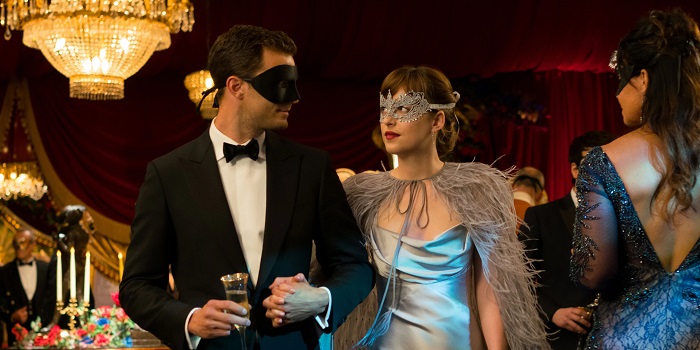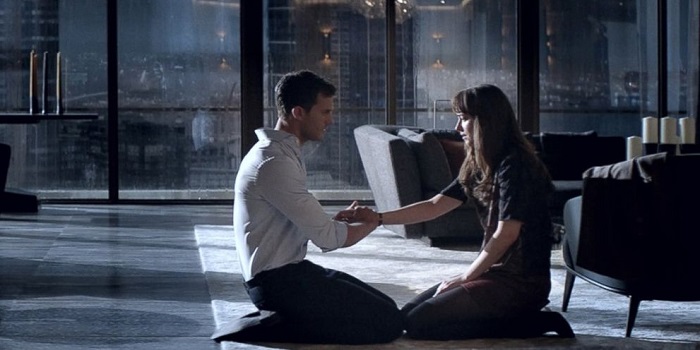In the literary and cinematic world, few titles have been as polarizing and intriguing as the erotic Fifty Shades Trilogy by E.L. James. However, the second installment in the series, Fifty Shades Darker, and particularly its cinematic adaptation by James Foley, is one story that moves beyond just the palpable physical attraction between Christian Grey (played by Jamie Dornan) and Anastasia Steele (Dakota Johnson), the main protagonists. The movie delves into deeper, more complex psychological terrains, beyond the primary theme of ambiguous boundaries between blowing off steam, love, and sexual exploration narrative.
So while this tale has garnered a colossal fan base, it hasn’t been without its share of criticism and controversy. This article aims to dissect this very multifaceted narrative of the story, distinguish the movie from its original literary counterpart, and explore the underlying themes that anchor its plot — all while shedding light on the controversies Fifty Shades Darker sparked along the way. Keep reading to learn more.
What Happens in ‘Fifty Shades Darker?’

After ending the complex official initiation of their relationship in Fifty Shades of Grey, Anastasia Steele tries to move on from Christian Grey. She finds a job at Seattle Independent Publishing and starts her role as Jack Hyde’s assistant. However, once she receives an invitation from Christian, her past with Christian resurfaces during Jose’s gallery exhibit featuring her portraits. The fresh romantic intent from Christian and willingness to change starts binding them back together.
However, Christian’s acquisition of SIP, distrust of Jack, and shadows from his past, like the unstable Leila and manipulative Elena soon come peeping in. Ana has a troubling encounter with Jack that results in his dismissal, making Jack Hyde bitter in the process. Plus, a dangerous face-off with Leila (Christian’s previous submissive) adds another dynamic that eventually brings the couple together. Dr. Flynn notes Christian’s transformation since meeting Ana, leading Christian to propose. At the end of the movie, there’s a life-threatening helicopter accident caused by a vengeful Jack. Christian survives it and announces their engagement on his birthday. This revelation ignites tensions with Elena, the main antagonist. However, the looming threat of Jack’s revenge casts a shadow over their joy.
‘Fifty Shades Darker’ Digs Deep Into the Psychological Side of Each Character

Ana comes from a sheltered past and regardless of how disturbed she was by Christian’s behavior and lack of intimacy from his end, she gets pulled right back towards him in a subconscious attempt to “tame” the traumatized and vulnerable Christian. Christian, on the other hand, is traumatized by his childhood, abandonment issues, and his introduction to BDSM through Elena Lincoln (played by Kim Basinger). Jack Hyde creates a love triangle type of situation but he’s eventually side-tracked because of his bitterness and lack of emotional maturity.
Leila Williams surfaces to highlight the consequences of Christian Grey’s previous actions and journey into BDSM. It represents how karma comes to unfold in mysterious ways. Elena, being the manipulative individual who propelled Christian Grey into BDSM, is unable to let go of her past. It represents her controlling nature and inability to accept Christian’s growth. All these factors should be weighed in when trying to understand the movie.
How Is the ‘Fifty Shades Darker’ Movie Different From the Book?

While the overall story remains intact, the film tones down the book’s explicitness to cater to a wider cinematic audience and achieve a mainstream rating. Plus, the depth of character development and certain subplots found in the book are either abbreviated or omitted entirely for the sake of film pacing. Both the book and cinematic portrayal have their own pacing but the visual interpretation is inevitably different from what the readers normally imagine through the book.
Exploring the Controversies Surrounding ‘Fifty Shades Darker’

Fifty Shades Trilogy and Fifty Shades Darker, in particular, are often criticized for trying to develop vague boundaries of consent and sexual desire, and mainstreaming the portrayal of BDSM. In some ways, the movie also casts a shadow over themes of personal growth — to the extent that it almost looks artificial. While the understanding of all this is subjective, the story of Fifty Shades Darker did lead to some groups calling a boycott when it was first released, as reported by ABC News.
What Themes Does ‘Fifty Shades Darker’ Explore?

Fifty Shades Darker, in some ways brilliantly explores the traumas, effects of past actions unfolding in the future, and the morally ambiguous nature of individuals around us. The bitterness of Jack Hyde (played by Eric Johnson) and the sympathetic condition of Leila are some other aspects that both the book and movie highlight and are actually helpful lessons for the fans. Romance and relationships, sexual desire, power and control, redemption, obsession, possession, and change are some of the themes that Fifty Shades Darker explores throughout the course of the movie.
 Follow Us
Follow Us




